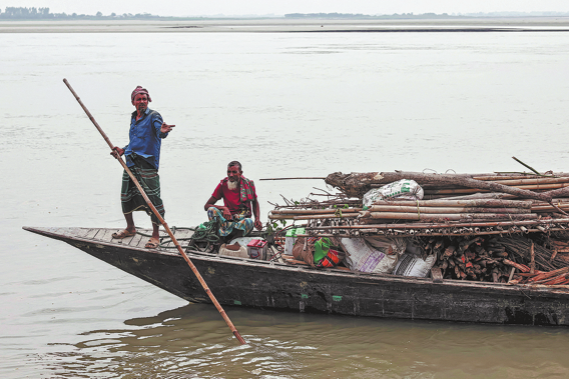Native Americans at higher climate risk with land loss
By AI HEPING in New York and LIU YINMENG in Los Angeles | China Daily | Updated: 2021-11-08 10:09

Native Americans have lost nearly 99 percent of their land after centuries of forced relocation by European settlers and the US government. In addition to land loss, the involuntary migration increased exposure of indigenous people to climate change impact such as higher temperatures and less rainfall.
These are just some of the findings of a seven-year project in which researchers examined data from a variety of sources, ranging from indigenous nations' publications to judicial records from land disputes. The paper, co-authored by researchers at Yale University, Colorado State University and the University of Michigan, was published in the journal Science on Oct 29.
"Our results show that in addition to a significant aggregate reduction in land density and spread, indigenous peoples were pushed to lands that are now more exposed to climate change hazards," said the researchers.
The study marks the first time that researchers have sought to quantify how much land Native Americans lost to European settlers and then the US government from the 1500s to the 1800s, as well as to look into the environmental and economic impacts of forced migration.
Compared with the historical period, land across all tribes has reduced by 98.9 percent. Moreover, 42.1 percent of tribes from the historical period have no federally or state recognized land.
For the tribes that do, the lands they possess today are only 2.6 percent the size of their historical lands, an average reduction of 215,308 square kilometers.
But land dispossession comes with another important consequence for Native Americans. The researchers found that present-day lands experience nearly two additional extreme heat days a year, compared with historical lands.
The change in annual rainfall is another indicator of the less hospitable environment in present-day areas. Average annual precipitation has dropped nearly 23 percent and 36.3 percent of the tribes experienced increased drought. Present-day lands also face greater wildfire hazards, as 47.7 percent of tribes saw heightened wildfire risk on current lands compared with historical ones.
Valuable resources
Besides climate impact, researchers also found that present-day lands are 19 percent less likely to sit on top of oil- and gas-producing wells, which are economically valuable resources.
Paul Berne Burow, one of the study's authors and a doctoral student at Yale, told The New York Times that giving land back to the tribes should be seen as a form of reparation, and a way to make tribal nations more resilient to a changing climate.
"There are really meaningful, deep connections that people have to a place," Burow said. "Returning dispossessed lands is one of the best things that can be done to begin to address these inequalities."
The researchers urged the government to better integrate the needs of indigenous people in future policymaking. Climate change policy should also address historical causes, such as forced migration and heightened natural resources extraction on Native American land, which have all contributed to the increased climate vulnerability of indigenous people.
























